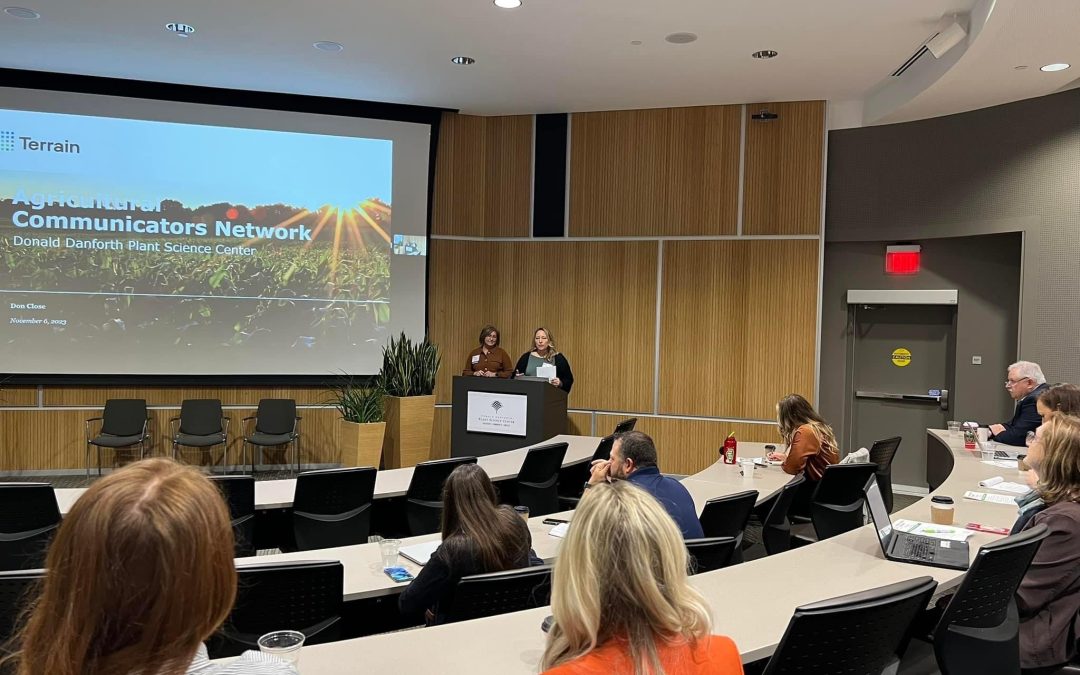Five Takeaways from the ACN Regional Workshop
By Bill Spiegel, ACN Past-President and Byline Editor
Packing a bunch of information into a tiny writing hole on a layout is just, well, difficult. Years ago, Steve Werblow did what everyone would do in that situation: he listened to Taylor Swift sing her song, “Love Story.”
The song, says Werblow–a five-time winner of the ACN Writer of the Year award–has a perfect story arc: Taylor finds a good guy, there is young love, it has potential, and perseveres even when others don’t think it will. You are happy when the song ends.
It is 327 words long, and takes just 3 minutes and 57 seconds to tell.
“I thought, ‘What am I complaining about?’ Look what she did.”
If Taylor Swift can tell a whole story in 327 words, so can you.
Werblow is a freelance writer and photographer and was one of the speakers at ACN’s Fall 2023 Regional Workshop, held at the Danforth Plant Science Center in St. Louis. More than 40 ag communicators attended the event, which was chock-full of tips and tricks.
Here are some more:
How to find stories. We’re entering the “farm meeting season,” which is a great place to learn new technologies and techniques to write about, and new people to interview. It may be hard to attend every event, but take a look at each agenda and save names and topics for a time when you may be in the area on a story-gathering trip, suggests Martha Mintz, owner of Corral Creek Communications. “Even if I didn’t go to the meeting, in those names [on the agenda], you can find more stories. You can find who the innovative people are, you contact them and talk through some of the different things they’re doing,” she says.
AI is helping journalists. Among journalists, there is a fear that Artificial Intelligence (AI) will replace people. Amy Simon, a journalism professor at the University of Missouri, assures this isn’t the case. “AI will lead us to question how we are leveraging tools, how we are using them to our best advantage,” Simon says. “What are we willing to trade, as journalists and communicators, with the increases in efficiency and productivity, which can ultimately be huge?” Simon says AI offers some useful tools:
- the ability to distill a complex subject into something easier to understand, or
- learn who the stakeholders are for a story they are reporting
Yet humans will continue to do the writing, she says.
AI: Garbage in, garbage out. Have you ever seen polls or quizzes associated with an article you’ve read online? Those features–which help folks spend more time on websites–may be machine-generated, or built with AI. Simon recalls an instance in which an MSN news site picked up an article about a woman’s tragic death, and a poll within the story asked the reason for the woman’s death: murder, accident, or suicide. “The machines were scanning the text and trying to build some interactivity, and there were comments from angry readers,” Simon says. The point is, AI is only as good as the information given to it, Simon says. “The question and problem is, what is our responsibility as journalists? Do we share content with AI so that we are the louder voice as to what is being indexed, or do we let the bad actors intentionally misinforming or disinforming with the content they are putting online out shout us?”
Read Charlotte’s Web. Again. E.B. White is known by journalists for his book with William Strunk called The Elements of Style. But there’s another book by E.B. White you should re-read, says Holly Spangler, editor of Prairie Farmer: Charlotte’s Web. “Just the simple straight-up prose in that book that tells a story with a minimum of words, that paints a picture,” she explains. “I kind of track back to that by the book, The Elements of Style, which really hammers home that idea of simple writing subject for object. You don’t have to dress it up. Sometimes it can be very simple, and you can use that as a base to start with.”

